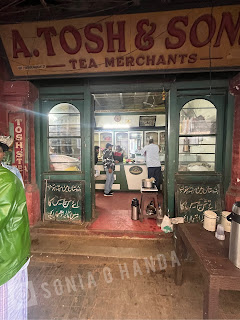KOLKATA ……MODERN YET ROOTED
A long-cherished dream came true! At last, I reached Kolkata. The swaying palms in the cool breeze welcomed us at the airport. In Kolkata, ancient monuments, novel skyscrapers and vintage homes stood across in absolute harmony, though a stark contrast in the houses of the opulent, the middle ranks and the impoverished. The moment you enter the military area of the Fort William Cantonment, you see heritage coming alive in the fort complex. Old-world charm is visible through the restoration and upkeep of the fort, a rare treat to see all the architectural monuments. The serene atmosphere away from the bustling city and the imposing structure with sturdy walls and moat show the military prowess of the East India Company.
The Fort William Cantonment showcases the colonial heritage of the early years of Britain’s administration in Bengal. Mote surrounding the fort, which was filled with water to thwart enemies in the olden days, gives it an air of exclusivity, wherein Field Marshal Sam Manekshaw has been one of the notable commanders, the Command that had the overall responsibility of the 13-day Indo-Pak War of 1971.
Heritage walks through the Cantonment, wherein the Vijay Smarak, a war memorial dedicated to the martyrs of the Sino-Indian War and Indo-Pak War, stands tall. The rows of vibrant flowers pay silent homage to the war heroes. Fort Museum tells many stories—from colonial Bengal to the 1971 Indo-Pak War. The oldest gun placed at the ever-imposing Manekshaw House, the library in an old church with Gothic and Georgian architecture and the imposing Dalhousie Barracks that is big enough to house a garrison battalion were the highlights of the fort.We were there for a Squadron get-together of the NDA course mates of my husband. Connections formed with course mates in the services are strong and everlasting. The moment they are together, it is back to being cadets. Ranks melt away as the academy nicknames take over. A trip to Sundarbans with such friends was the highlight of the trip. As we moved towards the interiors, the rural landscape, thatched houses, and pond with ducks and goats sitting lazily around the place on the way to Sundarbans felt like we had gone back a hundred years. The bus driver spoke Bengali, but his collection of Punjabi and the reach of Punjabi music all thanks to a few of the singers going global. A day-long boat cruise in the Sundarbans delta of the Ganga River gave us the taste of slow living. It was surreal watching the lush green Sundari mangroves lining the large expanse of river as our boat slowly meandered through it. Even though we did not see any tiger, the site of the saltwater crocodile basking in the sun and his move to pose for us seemed unreal but true, making up for it. Vaxing afternoon sunlight veined silver over the calm grey web of waves that looked divine. The dark salute of the old canoe boat in the sparkle of the glittering lazy sun was a picture out of a postcard. The meditative experience culminated with the sighting of wild boar hunting for food before the sun went down.
For an ardent admirer of Tagore, Thakur Bari was a pilgrimage. The immersive experience of walking around the house where Tagore lived brought tears of joy to my eyes. I was roaming in the museum, curated to an international standard, in the daze of a fan. The meditative feeling of drawing a deeper insight into the life of my cherished writer is everlasting in the recesses of my being.
We discovered local food, hand embroidery shops of the local artisans, auction houses full of heritage heirlooms, and impressive architecture through the by-lanes of the City of Joy and felt its heartbeat. The tea lover in me was elated to chance upon A Tosh and Sons, a century-plus-old shop selling tea leaves the old way. It was worth waiting in line at Nahum and Sons Jewish Bakery in the historic New Market building to get walnut tea cake that we devoured with KC Das samosas at tea time to complete the day-long trip walking in the alleys of Kolkata, the alleys that weave tales of the bygone era.
Eating places in their vintage form thrive with the high-end dining places. Sumptuous breakfast at over 150-year-old Puttiram sweets, puris and choler dal breakfast followed by Nolan gur rosogolla, the perfect way to begin a day. The shop has preserved tradition while making a mark in the culinary status of the state. Another hundred-plus-year-old sweet shop, Balaram Mullick, their baked rosogolla and aam doi, mango curd, has no match. The unbeatable flavours and nostalgia draw the locals to it. It is part of Kolkata’s iconic cultural fabric. Freshly made Jhal Muri on the roadside by a person selling the same for the last thirty-five years with the correct flavour of raw mustard oil was a perfect quick snack. Flurry’s Darjeeling pot tea felt homemade.
One trip and I am a fan forever. It is not surprising that Kolkata had fans of the likes of a famous poet, Mirza Galib. When Mirza Ghalib visited Bengal more than 150 years ago, he fell in love with this city. In the following lines, he described Kolkata to his friends,
Kalkatte kā jo zikr kiyā tū ne ham-nashīñ
ik tiir mere siine meñ maarā ki haa.e haa.e
Whatever little I managed to see mesmerised me. The rich character of the city stayed with me. The desire to be back even before we left the place says it all.









